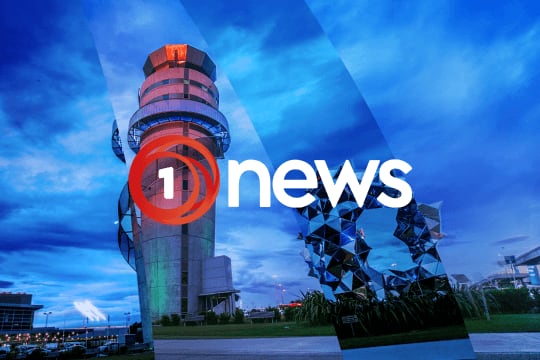A global alliance under pressure, a superpower in political turmoil, and instability in our backyard – Christopher Luxon is arriving in Washington for this year's NATO summit, currently the biggest show on earth, writes US Correspondent Logan Church.
A 75th birthday would usually be a big deal, but for NATO, the Cold-War era alliance created to combat the increasing might of the Soviet Union, this anniversary will not be remembered with fond memories.
President Joe Biden is hosting the NATO summit in Washington DC this week, gathering world and NATO partner countries – like New Zealand – to mark what should’ve been an historic occasion.
President Joe Biden is hosting the NATO summit in Washington DC this week, gathering world and NATO partner countries – like New Zealand. (Source: 1News)
Unfortunately for Biden and NATO, they find themselves besieged on all sides. And our Prime Minister is walking right into the middle of it.
For NATO, it’s found itself at a point of tension not seen since the Cold War. In part due to Russia’s invasion of Ukraine, which continues despite the heavy flow of weapons and arms from the United States and other countries to help prop up Ukraine’s military. There’s also growing concern about the rising influence of China, especially in the Pacific, plus the ongoing conflict in the Middle East.

For President Joe Biden, arguably the most influential and powerful figure in the organisation, his political career is under immense strain after a disastrous presidential debate where Biden lost his train of thought, couldn’t speak in coherent sentences, and generally let the other guy – who on current polling has a very good chance of being elected as President again – walk all over him.
As Biden hosts this summit there are growing factions in his own party wanting him gone.
US in turmoil
“The United States is almost in a position of turmoil,” said international relations expert Alexander Gillespie, who I spoke to just before I caught the train to Washington DC.
“There's that internal pressure that you're talking about whether he will or won't stay.”
It’s understood that Luxon will use his time in DC to meet with various politicians on both sides of the aisle, including former Trump rival now Trump apologist Ted Cruz, as well as Democrat Senator Jon Ossoff.
“For New Zealand's position, the importance of Mr Luxon is showing that he can work with whoever is in the White House,” said Gillespie.
“If he wants to give some advice to Mr. Biden, he might want to refer to Andrew Little and to Jacinda Ardern,” he added, referring to when former Prime Minister Ardern took over the Labour leadership prior to the 2017 election from a floundering Little and ultimately was able to form a government.
“But other than that, it's about trying to show you can work with both parties, because if Mr. Trump gets into power, which is quite conceivable at this point, there will be a lot of change from current New Zealand foreign policy.”

He said that’s likely to include increasing pressure to join AUKUS, Donald Trump’s proposed 10% trade tariff, as well as whether a Trump presidency would continue the same level of outreach in the Pacific as the Biden administration.
“Each and every one of those have a direct implication for us.”
A big element of the NATO summit for New Zealand is also the Indo-Pacific 4 meeting happening alongside - a coalition of western democracies in the Pacific made up of Australia, New Zealand, South Korea and Japan.
“This is starting to show the development of an informal regional security blanket... we are being pulled closer into regional security than we were in the past,” said Gillespie.
Ultimately, does New Zealand have weight to throw around at meetings like this NATO summit?
Well, not a lot.
But increasingly we’re finding ourselves with a seat at the table – even if that table has some pretty big cracks in it.


















SHARE ME